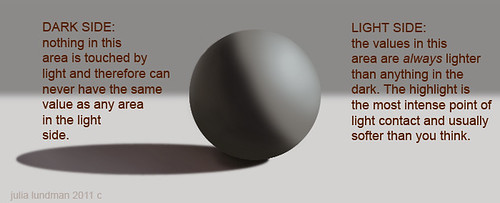I was reminded of how important rendering the sphere is when I took Sadie J. Valeri's two week painting workshop last January. Sadie had all of us render a sphere using graphite pencils on the first day of the workshop, and also as homework. Some of us rendered several by the end of the week. After the workshop ended I began some research on lighting conditions and thought I would share the details.
In lighting, there is a simple division between light and dark that is important to understand.
The term for this lighting effect is THE TERMINATOR. Regardless of whether you are interested in observational art or imaginary work, this simple lighting principle can be applied to great effect.

Once the terminator is indicated, there are several more effects to observe and understand, which I have indicated in the chart below. Many effects within the shadow can be observed, but does not necessarily mean they need to be rendered. Simplifying shadows into two values has a pleasant effect when rendering form because the eye does not dwell in the dark areas. Logic tells us that if the eye does not dwell there, then calling attention by over rendering shadows will break the believability of the form. That is not to say that the shadow areas are not important; they what hold a picture together (more on this concept in later posts):
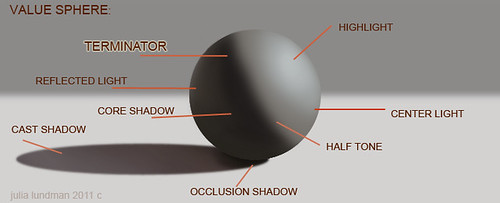
I did this exercise with pencil two times, and then digitally in Photoshop. I found both very difficult and challenging in unique ways. I think my digital samples above, for instance, still need some work - and I will continue to try perfecting. I highly recommend doing both analog and digital; the traditional method helps build motor skills and sharpens the eye and digital is a good way to refine your wacom or cintiq skills. (I recommend using the soft airbrush at 30-50% opacity to build up tones)
1. BEFORE YOU BEGIN - traditional method: sharpen two graphite pencils, a 2H and H. Sharpen your pencils with an xacto blade taking off the woody part of the pencil and then use sandpaper to make a very very fine point. Use a pad of strathmore 400 lb paper with the cream surface, widely available in art supply stores (also great for drawing in general and also inexpensive). If doing this digitally, use the soft airbrush and follow these steps exactly using the smallest diameter of brush.

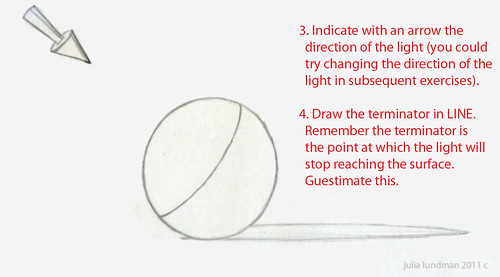
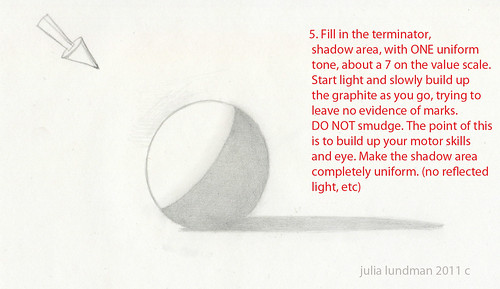
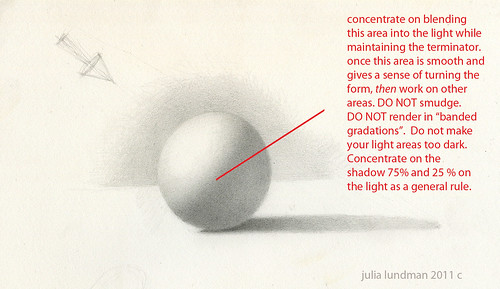
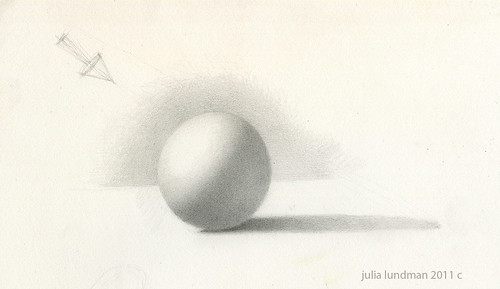
Finished sphere can have a foil behind it and an edge indicating a horizon line for a sense of place. Do this exercise more than once or twice! I have seen a noticeable improvement in my drawing/painting skills since having incorporated this exercise into my routine. There are other concepts about light and shadow that I have learned about that I would like to share and will do that in coming posts. In the mean time, have fun trying this! Not as easy as it looks ;)
Good luck!
